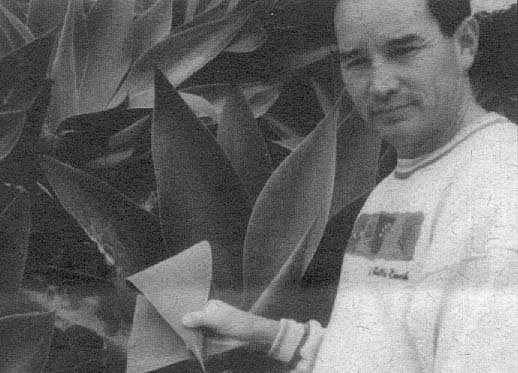|
|
  |
Home > Products > Succulents > Agave Page > Agave Edema
| |

Robert Muraoka examimines Agave Edema on Agave attenuata in 1996. |
| |
Have you noticed the blisters affecting the foliage of your Blue Agave (Agave attenuata) as well as others in town. Well, if you have you are not alone. The damage that occured on Santa Barbara agaves happened when the warm, fall-soil temperatures coincided with the first cold artic-winter storm of the year, resulting in a physiological disorder called oedema which affeces many types of plants. The symptoms begin as small water soaked blisters which continue to swell, burst, collapse and then turn tan or brown in color. This is not a fatal disease but the damage is unsightly. Although the blemishes on the leaves are permanent, new foliage will be free of the disease [sic], unless the same environmental conditions that caused the disorder are repeated.
The conditions that cause oedema occur when the soil is warm and moist and the air in the atmosphere rapidly changes from warm and dry to cool and moist. When the air is warm and dry, water loss from the foliage is in balance with the amount of water drawn up from the plant's root system. When the air suddenly becomes cool and moist, water loss from the foliage slows considerably, causing the plant cells to expand and swell as the roots continue to draw moisture from the warm soil. This is what causes the characteristic blistering, which eventually burst creating the collapsed, water soaked spots.
Because this is a physiological disorder no action needs to be taken. It will simply be a matter of time before the damaged foliage is replaced by new foliage. The temptation to remove the damaged leaves should be resisted for two reasons 1) The damaged leaves are still functional and will assist in a speedier recovery and 2) Cutting off the damaged leaves may cause the plant to look unnatural, and possibly even more unsightly than if the damaged foliage remained.
Pest Control Advisor Robert Muraoka wrote about this occurrence in his Spring 1997 issue of "Santa Barbara Garden News"
|
|
|

